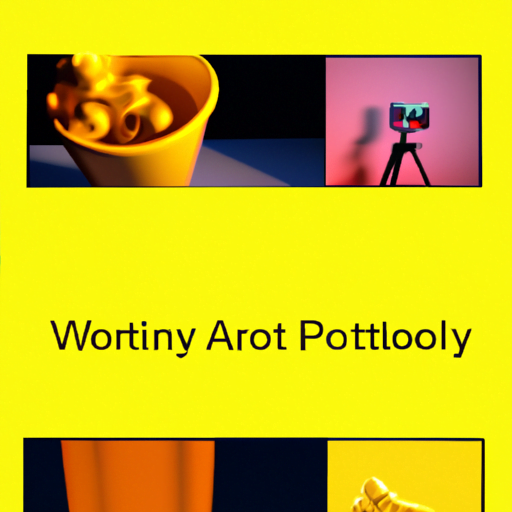
-
Table of Contents
Designing for Virtual Galleries and Art Exhibits

Virtual galleries and art exhibits have become increasingly popular in recent years, offering a unique and immersive way to experience art from the comfort of one’s own home. With advancements in technology and the rise of virtual reality (VR) and augmented reality (AR), artists and curators now have the opportunity to showcase their work to a global audience without the limitations of physical space. However, designing for virtual galleries and art exhibits requires careful consideration to ensure a seamless and engaging experience for visitors. In this article, we will explore the key elements and best practices for designing virtual galleries and art exhibits.
The Importance of User Experience
When designing virtual galleries and art exhibits, user experience (UX) should be at the forefront of the design process. Just like in physical galleries, visitors should be able to navigate the space easily and interact with the artwork in a meaningful way. Here are some key considerations for designing a user-friendly virtual gallery:
- Intuitive Navigation: The virtual gallery should have a clear and intuitive navigation system that allows visitors to move around the space effortlessly. This can be achieved through the use of menus, arrows, or teleportation.
- Interactive Elements: Incorporating interactive elements such as clickable artworks, information panels, and audio guides can enhance the visitor’s engagement and provide additional context to the artwork.
- Optimized Performance: Virtual galleries should be optimized for performance to ensure smooth navigation and minimize loading times. High-resolution artwork and detailed environments can be demanding, so it’s important to strike a balance between visual quality and performance.
- Accessibility: Designing for accessibility is crucial to ensure that virtual galleries are inclusive and can be enjoyed by people with disabilities. Providing options for text-to-speech, color contrast adjustments, and keyboard navigation can greatly enhance the accessibility of the virtual gallery.
Creating Immersive Environments
One of the key advantages of virtual galleries is the ability to create immersive environments that transport visitors to different worlds and enhance their connection with the artwork. Here are some strategies for creating immersive environments:
- Realistic 3D Models: Using high-quality 3D models can bring the artwork to life and create a sense of presence for the visitor. Attention to detail, such as accurate lighting and textures, can greatly enhance the realism of the virtual environment.
- Sound Design: Incorporating sound design can add another layer of immersion to the virtual gallery. Ambient sounds, music, or even audio descriptions of the artwork can create a more engaging and immersive experience.
- Virtual Reality (VR): VR technology allows visitors to fully immerse themselves in the virtual gallery by wearing a VR headset. This technology provides a more immersive experience by tracking the visitor’s movements and allowing them to interact with the artwork in a more natural way.
- Augmented Reality (AR): AR technology overlays virtual elements onto the real world, allowing visitors to experience the artwork in their own environment. This can be particularly useful for showcasing large-scale installations or sculptures that may not fit within a physical gallery space.
Engaging and Informative Content
While the visual and immersive aspects of virtual galleries are important, it’s equally crucial to provide engaging and informative content to enhance the visitor’s understanding and appreciation of the artwork. Here are some ways to achieve this:
- Artwork Descriptions: Each artwork should be accompanied by a detailed description that provides information about the artist, the inspiration behind the piece, and any relevant historical or cultural context. This can help visitors connect with the artwork on a deeper level.
- Artist Interviews and Commentary: Including interviews or commentary from the artists themselves can provide valuable insights into their creative process and intentions. This can create a more personal connection between the visitor and the artist.
- Interactive Exhibits: Virtual galleries can offer interactive exhibits that allow visitors to explore the artistic process or experiment with different techniques. This can be done through virtual workshops, interactive tutorials, or even virtual reality painting experiences.
- Community Engagement: Virtual galleries can also facilitate community engagement by providing a platform for visitors to leave comments, share their thoughts, or even participate in virtual events such as artist talks or panel discussions.
Case Studies: Successful Virtual Galleries
Several virtual galleries and art exhibits have successfully implemented these design principles to create immersive and engaging experiences for visitors. Let’s take a look at two notable examples:
1. The Museum of Other Realities
The Museum of Other Realities (MOR) is a virtual reality museum that showcases cutting-edge digital art. It offers a range of interactive exhibits, from immersive installations to virtual reality experiences. MOR provides an intuitive navigation system that allows visitors to teleport between different rooms and interact with the artwork using hand gestures. The museum also hosts virtual events and exhibitions, creating a sense of community and fostering engagement among visitors.
2. The Louvre Virtual Tour
The Louvre, one of the world’s most renowned museums, offers a virtual tour that allows visitors to explore its vast collection from anywhere in the world. The virtual tour provides high-resolution images of the artwork, accompanied by detailed descriptions and historical context. Visitors can navigate through different galleries and even access areas that are not open to the public. The Louvre’s virtual tour provides an immersive and educational experience that closely mirrors the physical museum visit.
Summary
Designing for virtual galleries and art exhibits requires careful consideration of user experience, creating immersive environments, and providing engaging and informative content. By prioritizing intuitive navigation, interactive elements, and optimized performance, virtual galleries can offer a seamless and enjoyable experience for visitors. Additionally, incorporating realistic 3D models, sound design, and VR or AR technology can enhance the immersion and connection with the artwork. Finally, providing detailed artwork descriptions, artist interviews, interactive exhibits, and community engagement opportunities can enrich the visitor’s understanding and appreciation of the artwork. With these design principles and best practices in mind, virtual galleries have the potential to revolutionize the way we experience and engage with art.
